 Weird Stuff
Weird Stuff  Weird Stuff
Weird Stuff  Animals
Animals 10 Inspiring Tales of Horses Being Human
 Mysteries
Mysteries Top 10 Haunting Facts About the Ghost Ship MV Alta
 History
History 10 Surprising Stories About the Texas Rangers
 Humans
Humans 10 Philosophers Who Were Driven Mad by Their Own Theories
 Miscellaneous
Miscellaneous 10 Video-Game-Worthy Weapons and Armors from History
 Weird Stuff
Weird Stuff 10 Psychics Who Accurately Predicted Wartime Events
 The Arts
The Arts 10 Pieces of Art Inspired by a Broken Heart
 Health
Health 10 Science Fiction-Sounding New Medical Treatments
 History
History 10 Surprising Facts About the Father of Submarine Warfare
 Weird Stuff
Weird Stuff 10 Times Real Laws Were Based on Bizarre Hypotheticals
 Animals
Animals 10 Inspiring Tales of Horses Being Human
 Mysteries
Mysteries Top 10 Haunting Facts About the Ghost Ship MV Alta
Who's Behind Listverse?

Jamie Frater
Head Editor
Jamie founded Listverse due to an insatiable desire to share fascinating, obscure, and bizarre facts. He has been a guest speaker on numerous national radio and television stations and is a five time published author.
More About Us History
History 10 Surprising Stories About the Texas Rangers
 Humans
Humans 10 Philosophers Who Were Driven Mad by Their Own Theories
 Miscellaneous
Miscellaneous 10 Video-Game-Worthy Weapons and Armors from History
 Weird Stuff
Weird Stuff 10 Psychics Who Accurately Predicted Wartime Events
 The Arts
The Arts 10 Pieces of Art Inspired by a Broken Heart
 Health
Health 10 Science Fiction-Sounding New Medical Treatments
 History
History 10 Surprising Facts About the Father of Submarine Warfare
Top 10 Infamous Wartime Prisons
Keeping prisoners of war is a fairly new practice. Prior to the Hundred Years’ War between England and France in the 14th and 15th centuries, armies killed enemy prisoners of war or just turned them into slaves. Richer or more valuable prisoners of war were sometimes ransomed, depending on their skills and importance.
However, with the emergence of keeping enemy combatants came the problem of where to keep them. This led to the construction or conversion of several prisons that were used to hold enemy combatants while the wars raged on.
10 Camp Sumter
Georgia, USA
US Civil War

Camp Sumter was the biggest Confederate-operated prison of the US Civil War. It was also called Andersonville Prison Camp and opened in February 1864 after the Union and the Confederacy suspended prisoner swaps over the treatment of black prisoners.
Living conditions at Camp Sumter were terrible. The prison was overcrowded, the water was bad, hygiene was nonexistent, and disease was rife. There were no structures, and prisoners had to do with makeshift tents made from wood and blankets. They also peed and pooed inside the small creek that served as their only source of water. Several prisoners teamed up to form “raiding groups” and attacked other prisoners to get whatever they could.
At one time, Captain Henry Wirz, the prison commander, wrote a letter to the Union requesting the return of prisoner swaps. The letter was signed by almost all the prisoners at Camp Sumter and was delivered to the Union by five prisoners.
The Union rejected the request, and Camp Sumter continued holding prisoners until it was closed in April 1865. By then, about 14,000 of its 45,000 prisoners were dead. Captain Wirz was tried and executed for war crimes after the end of the war.[1]
9 Norman Cross Prison
Norman Cross, United Kingdom
Napoleonic Wars
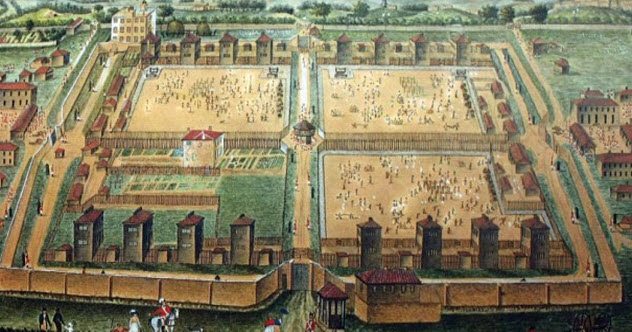
Norman Cross prison is the world’s first purpose-built prisoner-of-war camp. It was constructed to hold French soldiers and politicians captured during the Napoleonic Wars fought between Britain and France in the late 18th and early 19th centuries.
The prison opened in April 1796 and was run by the Royal Navy. Prison authorities provided their captives with education and entertainment to keep them busy and less interested in escaping. The authorities also encouraged prisoners to make small models of whatever they could and sell them to the English populace. Most prisoners were French, so it was no surprise that they had a knack for making guillotines.
For some hilarious reasons, many prisoners also lacked clothes. Apparently, at that time, individual governments were responsible for clothing their soldiers imprisoned in other countries. So the British government paid France to clothe British prisoners in France, and the French government paid Britain to clothe French prisoners in Britain. However, the French prisoners had bad gambling habits and many lost all they had, including their clothes.
Diseases were common, but most of the casualties happened between 1800 and 1801 when 1,021 prisoners died during a typhus epidemic. Some also committed suicide because they were unable to bear the conditions of the prison. The facility was closed after the defeat of Napoleon in 1814. Approximately 1,770 prisoners perished in its 17 years of operation.[2]
8 Geoje-do Prisoner Of War Camp
Geoje Island, South Korea
Korean War
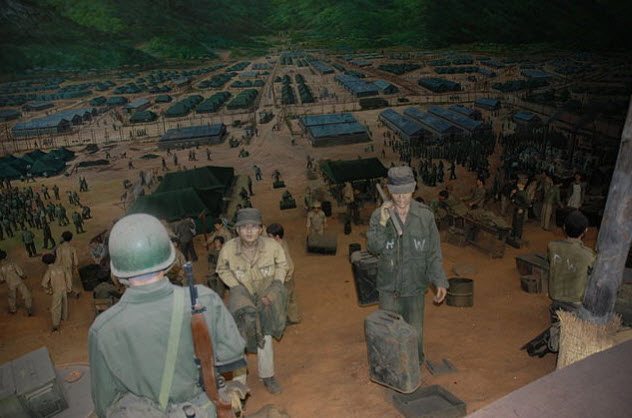
Geoje-do was a Korean War–era prison jointly run by the South Korean government and the United Nations Command. It opened in January 1951 and held over 170,000 Chinese and North Korean prisoners. It was the scene of a series of violent riots and brazen actions rarely seen in prisoner-of-war camps. On one occasion, the army needed six tanks to quell a rebellion.
Prisoners generally belonged to one of two groups: those who remained loyal to North Korea and communism and those who did not. Both groups clashed at night, leaving a trail of corpses that were picked up by United Nations ambulances in the morning.[3]
One time, the pro-communist group captured the prison commander, US General Dodd, and put him on trial for abusing prisoners. They released him after negotiations with other prison officials. Another time, the pro-communist faction put rival prisoners on trial and executed 15 of them.
After the war, the prison was in the news again when North Korea and South Korea bickered over returning captured prisoners. North Korea and China wanted all prisoners returned home, while South Korea and the United States wanted the prisoners to decide whether they wanted to stay in South Korea or return home. In the end, the prisoners were allowed to choose whether to leave or stay.
7 Camp 020, Latchmere House
Ham Common, Britain
World War II

The famous Latchmere House in Ham Common, Britain, served as a prison and interrogation center during World War II. It was called Camp 020 and was under the control of the Security Service (aka MI5). Unlike other wartime prisons, it held only enemy civilian officials, especially German spies.
Camp 020 was led by Lieutenant Colonel Robin Stephens, whose love for wearing a monocle earned him the nickname “Tin Eye.” He forbade the use of torture as he believed that it would make spies tell lies. In his words: “A prisoner will lie to avoid further punishment, and everything he says thereafter will be based on a false premise.”[4]
Stephens employed psychological pressure to break the hardest of prisoners. He bugged their cells, deprived them of sleep, and kept them in a continued state of suspense. With this, he was able to convert at least 12 of the over 500 inmates at the prison into double agents. He also used over 120 for counterespionage against Germany and executed 15 who refused to break.
6 Hoa Lo Prison
Hanoi, North Vietnam
First Indochina War And The Vietnam War
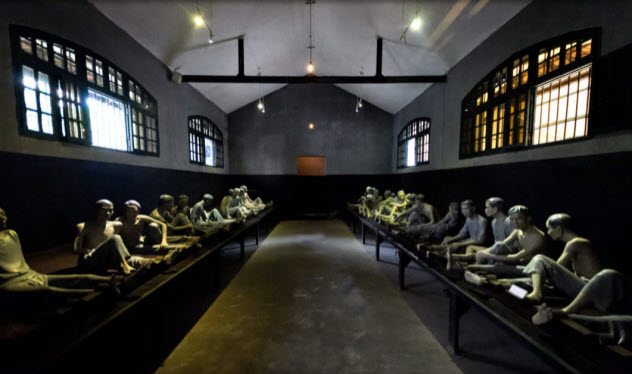
France built Hoa Lo prison in 1899. At that time, it was used to hold political prisoners and was called Maison Centrale (“The Central Prison”). However, the Vietnamese preferred to call it Hoa Lo (“fire stove”) after the village that was destroyed to allow construction of the prison. That village specialized in trading pottery from “fire stoves.” Also, many stores sold coal-fired or wood stoves there in precolonial times.
Hoa Lo Prison had a maximum capacity of 500 inmates, although it held about 2,000 Vietnamese prisoners during the First Indochina War and 600 US prisoners during the Vietnam War. It was heavily fortified and defended, complete with concrete walls that were 0.61 meters (2 ft) thick, electrified fences, and iron doors. Its US prisoners were exclusively downed pilots, who later renamed it the “Hanoi Hilton” after the famous Hilton hotel chain.[5]
One of Hoa Lo’s most famous inmates was John McCain, who later became a US Senator. His flight suit and parachute remain on display at the prison, which was converted into a museum in 1993. It is a walk-through museum, complete with life-size statues that depict the cruelty meted out to Vietnamese prisoners by the French. Propaganda videos and photographs show that the US prisoners were treated well.
5 HMS Jersey
New York, USA
American Revolutionary War
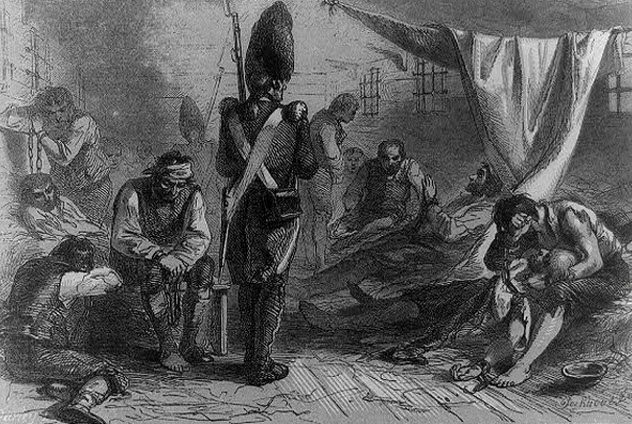
HMS Jersey was the deadliest of several warships converted into prisons during the American Revolutionary War. The ships held American soldiers, merchant navy personnel, and civilians who refused to swear loyalty to the British Crown.
Living conditions on these ships were terrible, especially on HMS Jersey where 12 of its 1,000 prisoners died daily. This was probably why it was nicknamed “Hell.”
Food served to prisoners aboard the Jersey was not even fit for animals. The bread was moldy, the meat was putrid, and the soup was cooked with water from the copper-contaminated East River. The prisoner cabins were waterlogged, and the entire ship became so hot during the day that prisoners stripped themselves naked.[6]
It was normal for rats to feed on dying prisoners. More Americans died on these prison ships than in the war itself. It is estimated that 8,000 Americans died in the war while 11,000 died on the ships.
4 Colditz Castle
Saxony, Germany
World Wars I And II

Colditz Castle was built in the 11th century. It was first used as a watchtower and later, a zoo, workhouse, hospital, and prison. It was converted into a prison during World War I and again during World War II when it was called Oflag IV-C.
It was one of the most feared of all Nazi prisoner-of-war camps and was intended for inmates who had escaped from other prisons. However, it did hold some important prisoners like Giles Romilly, a journalist and nephew of Winston Churchill.
Life at Colditz Castle was okay on average. Prisoners spent their days organizing shows, plays, and games. They even held a prison Olympics in 1941. They also created a version of rugby, which they called “stoolball” because players needed to knock the opposing goalkeeper off the top of a stool. Despite the facility’s status, some prisoners still managed to escape from Colditz Castle.
The major problem was not escaping but reaching friendly territory. Unlike other POW camps, Colditz Castle was deep in Nazi-controlled territory and was 645 kilometers (400 mi) from the closest Allied-controlled territory.
Inmates escaped by making duplicate keys, maps, and fake identification papers. Some also pretended to be ill or mentally challenged so that they could be sent to hospitals. It is speculated that 32 prisoners escaped, although only 15 managed to reach friendly territory.[7]
British Lieutenant Airey Neave escaped on his second attempt. He was disguised as a German soldier and walked out through the gates. In another incident, three Frenchmen escaped while seeing a dentist in town. Today, Colditz Castle has been converted into a museum.
3 Con Son Prison
Con Son Island, South Vietnam
Vietnam War
France built Con Son prison in 1939. However, it came under the control of the government of South Vietnam during the Vietnam War. South Vietnam used it to hold North Vietnamese prisoners of war and South Vietnamese dissidents, some as young as 16.
The dissidents’ offenses included protesting against the government and refusing to salute the flag of South Vietnam. Con Son prison is famous for its “tiger cages”: cramped 1.5-meter (5 ft) by 2.7-meter (9 ft) cages that were used to hold prisoners as a form of torture.
Rumors about the tiger cages had been making the rounds in the US. They were confirmed by two Congressmen, who deviated from the planned route of a tour. Using a map drawn by a former inmate, they found a secret room hidden between the prison walls.
Inside, they discovered the tiger cages. One prisoner in the cages had three fingers cut off, and another had his skull split open. Many also had smelly, open sores caused by the chains used to bind them by the ankles.
Future Senator Tom Harkin, who was an aide to the Congressmen at that time, took some pictures and had them printed in Life magazine on July 17, 1970. The pictures caused an international uproar that led to the transfer of 480 tiger cage inmates to other prisons or mental institutions.
US Congressman Philip Crane drew the ire of the public when he visited the prison after the Life publication and stated that the cages were cleaner than the homes of most Vietnamese people.[8]
2 Morris Island Prison
South Carolina, USA
US Civil War
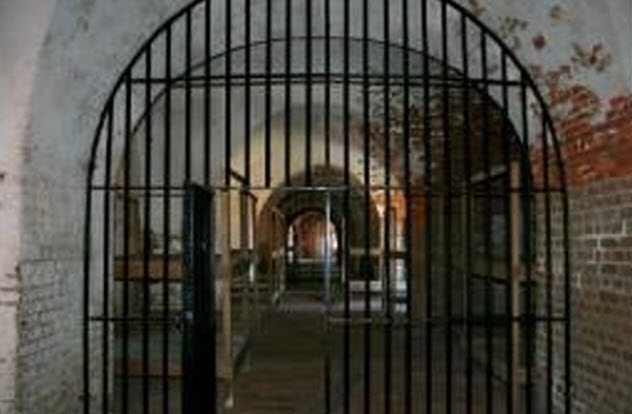
Morris Island prison was a US Civil War–era facility located on Morris Island, South Carolina. It was operated by the Union and is infamous for holding the “Immortal Six Hundred,” a group of 600 unfortunate Confederate soldiers used as pawns in a dangerous game played by Confederate General Samuel Jones and Union General J.G. Foster.
The problems of the Immortal Six Hundred began in June 1864 when Jones transferred 50 Union soldiers to Charleston, South Carolina, which was under Union artillery bombardment. Jones informed Foster of the development, hoping that he would stop the bombardment.
But Foster did not stop the bombardment. Instead, he transferred 55 Confederate prisoners to a makeshift Union prison on Morris Island, South Carolina. It remained so until both sides agreed to a prisoner swap.
The swap encouraged Jones to transfer another 600 Union prisoners to Charleston. Again, the Union responded by transferring 600 Confederate prisoners (the Immortal Six Hundred) to Morris Island. No swap was initiated this time. In fact, things only got worse.
More prisoners were brought in to Morris Island prison from Camp Sumter, Georgia, which was under the threat of a Union attack. The prison soon became congested as yellow fever raged through the camp and killed prisoners. Jones ended this by transferring the inmates to other prisons without the approval of his superiors, and the Union responded by transferring the Immortal Six Hundred to Fort Pulaski, Cockspur Island.[9]
The Immortal Six Hundred were in bad shape when they arrived at Fort Pulaski. Many had coughs and diarrhea, and 80 were either dead or hospitalized. A few had escaped or were unaccounted for.
However, conditions did not improve. Food was in short supply, and prisoners made do with unlucky cats and dogs that strayed into the camp. Rations were increased in January 1865, and the prisoners were moved to Fort Delaware in March 1865. Only 465 survived.
1 Rheinwiesenlager
Germany
World War II
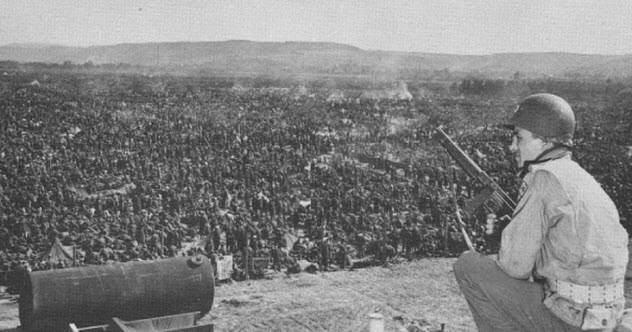
The Rheinwiesenlager was a series of 19 prisoner-of-war camps built along the Rhine River toward the end of World War II. They were constructed in April 1945 to hold two to three million German soldiers who had surrendered to the Allies as they moved into mainland Germany.
Prisoners in the Rheinwiesenlager were kept in conditions way below those required by the Geneva Convention. The prisons were overcrowded, food and water was scarce, and shelter was nonexistent. The Allies also restricted the Red Cross from inspecting the camps.
The Allies justified this by labeling the prisoners “Disarmed Enemy Forces” and not “Prisoners of War.” That way, they claimed that the inmates were not prisoners and not covered by the Geneva Convention. In 1989, writer James Bacque released a book titled Other Losses in which he claimed that General Dwight Eisenhower deliberately starved the German prisoners. Bacque claimed that this led to the deaths of over one million prisoners.
The first part is true. Eisenhower did not want to give the prisoners more food than the civilians displaced by the war. The second part, however, remains controversial. Stephen E. Ambrose claims that not more than 56,000 German prisoners died in the camps.[10]
Read more bizarre facts about prisons on 10 Of The Greatest Historical Prisons and 10 Bizarre Prisons From Around The World.








